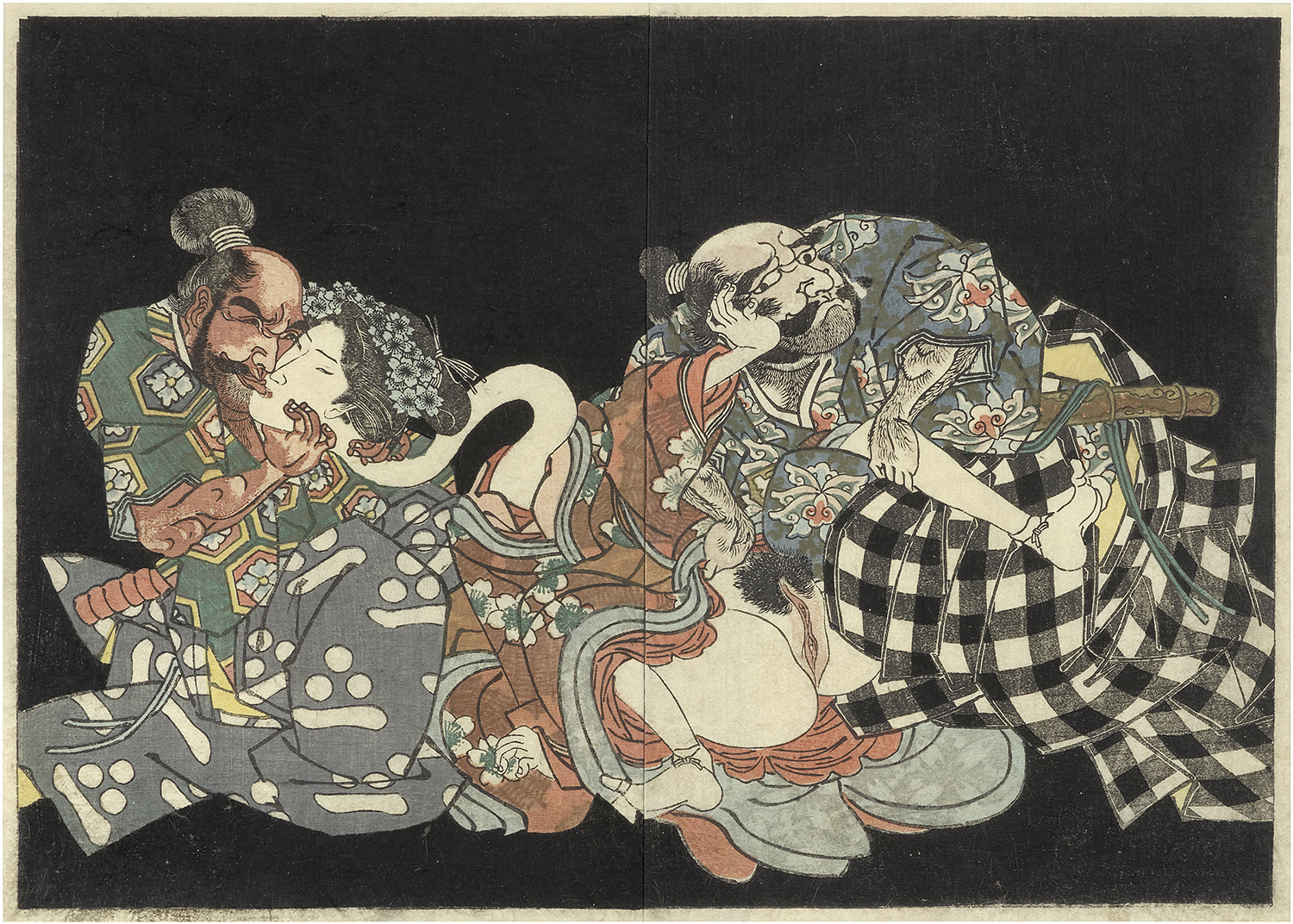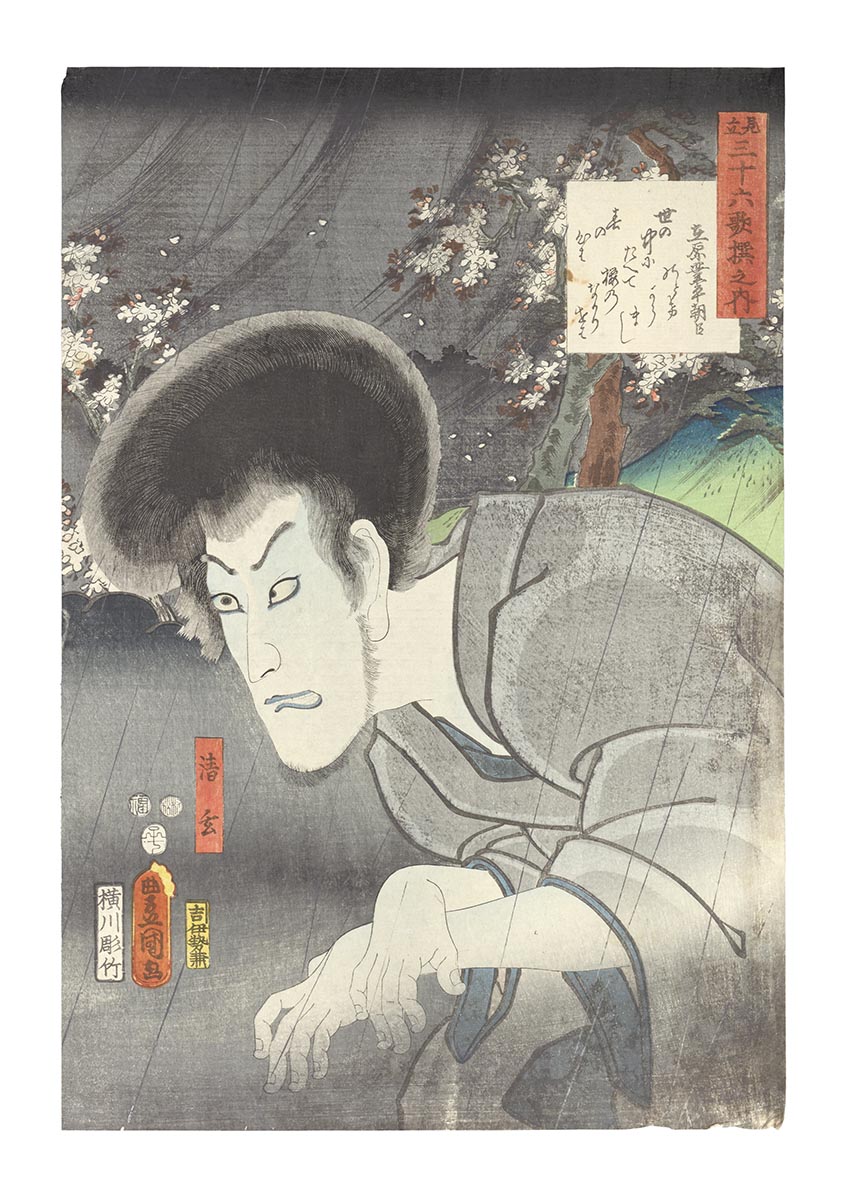Rokurokubi
Ukiyo-e
- Sold
-
Material
Woodblock print (nishiki-e); ink and color on paper
-
Size
Size: 19 x 26.5 cm
-
Period
Date: ca. 1827
Description
The rape of a rokurokubi yokai by Utagawa Kunitora (act. 1804-1844)
Series: “Imayo toshi- otoko” (Fashionable Men of the Zodiac Year)
Fine impression, colors and condition.
Little is known about Kunitora, except that he was a member of the Utagawa school (pupil of Toyokuni I) and was active around 1804-1840. His most well-known (shunga) work is “Fashionable Men of the Zodiac Year” series because Picasso was inspired by it.
Rokurokubi are shown in the Japanese spirit (kaidan) and in apparition (yokai) tales. These ghosts (often female) are very similar to humans with only one major distinction. Rokurokubi spirits are divided in two categories: one can extend its neck (which we’ll study today) and the other one can separate its head and let it fly around freely (those are called nukekubi). Their origins are unknown. Some say it was created simply for entertainment purposes rather than deriving from any myths or folklore.
There are stories in which the rokurokubi are not a yokai. In these cases, they are humans who have a disorder that alters their body. In his work “Kanden Kohitsu” the Edo era author Ban Kokei tells the tale of a Yoshiwara geisha whose neck would stretch during her sleep. This was due to a body condition where her heart would come loose and neck would lengthen.


